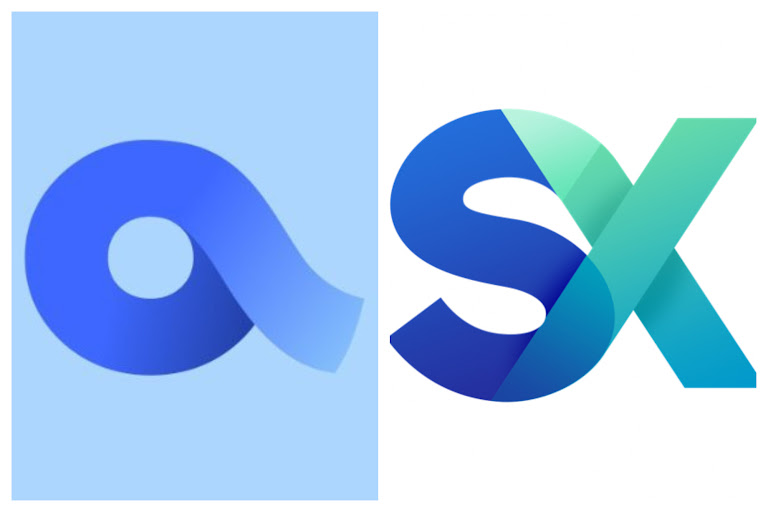
Alyssa Davidson
Posted: Oct 18, 2025 9:00 AM Updated: Oct 17, 2025 10:15 AM

Correction and fact check date: October 18, 2025, 9:00 AM
briefly
Prediction markets are evolving from niche speculation to decentralized tools for risk prediction, guiding decisions in finance, science, governance, and the metaverse by converting collective beliefs into measurable probabilities.

Prediction markets have long been considered a clever trick for political junkies or sports gamblers. But the truth is that they are evolving into something much bigger: a distributed lens into how the world thinks about risk, probability, and truth itself.
From cryptographic protocols that prevent hacks to scientists predicting breakthroughs, prediction markets are quietly rewriting how we measure collective intelligence. This is no longer about guessing who will win the next election. It’s about leveraging markets to price reality before it happens.
A quick reality check
For years, platforms like Polymarket, Augur, and Zeitgeist have been niche experiments. But things changed in 2024 and 2025. Liquidity is deepening, infrastructure is maturing, and institutions are starting to take notice. NYSE’s parent company, Intercontinental Exchange (ICE), has also invested up to $2 billion in prediction markets. This shows that what was once considered a curiosity is quickly becoming a trusted financial pipe.
Shayne Coplan, founder of Polymarket, said the platform’s mission is to be “a source of alternative truth.” In practice, this means converting all uncertain issues, from cryptocurrency regulation to global conflicts, into data that the public can trad.
Academic support backs him up. Research by author Philip Tetlock super predictionWe found that skilled forecasters who update their beliefs over time can beat many experts in accuracy. Takeout? Crowd intelligence, when structured and incentivized, often outperforms top-down expertise.
This is the foundation upon which prediction markets are currently built, and cryptocurrencies are leading the way.
DeFi’s New Safety Net: Hedging Risk Through Prediction

Alternate Capitalization: Zeitgeist and PredictionSwap brand logos feature a white striped circular symbol over a black grid with an asterisk on the left. The right half features a shiny, transparent blue hat on a black background.
Prediction markets are no longer just for guessing. It is becoming a dangerous tool. In decentralized finance, where exploits or depegs can cause billions of dollars to evaporate overnight, prediction markets can function like a collective insurance mechanism.
Platforms like Zeitgeist and PredictionSwap are experimenting with markets around real-world DeFi events. “Will any major stablecoin lose its peg this quarter?” or “Will Protocol X suffer a critical attack by the end of the year?”
When traders put real money behind these questions, they create a transparent and vibrant probability layer that reflects the likelihood that the market considers a crisis. As Paradigm’s Hasu observes, prediction markets can become “finance’s layer of truth,” quantifying fear, trust, and uncertainty better than sentiment indices.
DAO predicts token launch and upgrade

Alt cap: Polymarket brand logo showing a white geometric logo resembling two overlapping triangles or side chevrons forming an abstract letter “M” or “W” in the center on a blue background.
Cryptocurrencies thrive on speculation, but most of it is unstructured noise. Prediction markets turn this confusion into signals.
Markets around DAO proposals, network upgrades, or token launches hosted on Omen or Polymarket help quantify what the community actually believes. Instead of Twitter polls or gut feelings, investors and builders get measurable trust data. Will this governance proposal pass? Will the hard fork be delivered on time?
This is the wisdom of crowds in gaming. This can make decentralized governance more transparent and accountable.

Alternate Cap: Azuro and SX Bet brand logos featuring a lowercase letter “a” with a curved tail on the left and combining “S” and “X” in gradient blue and green tones on the right.
The Metaverse operates based on beliefs such as scarcity, hype, and momentum. Prediction markets provide that belief structure.
Platforms like Azuro and SX Bet are testing the market around NFT floor prices, play-to-revenue metrics, and esports results. This is not a trivial side bet. They are experiments in putting a price on digital culture itself.
Traders are building a predictive mirror to the Web3 economy as they predict whether games will double their daily active users or whether NFT collections will hold rock bottom. Developers can observe and adjust these predictions in real time. This is a feedback loop where the community’s beliefs literally become data.
Regulations, scandals, market events
The cryptocurrency world isn’t just responding to regulation. transaction thereto.
Prediction markets have become an early warning system for major events such as ETF approvals, lawsuits, or exchange collapses. For example, Polymarket’s massive markets for Bitcoin ETFs and FTX creditor collections have attracted thousands of participants and millions of liquidity.
Coplan said prediction markets “transform uncertainty into data.” In a regulatory environment defined by hearsay, this is no small task. Traders and analysts now use these markets as indicators of stress in the entire ecosystem the way Wall Street once used credit-default swaps.
Business forecast and corporate strategy

Alternate Capitalization: Blue and teal triangle shapes arranged in a spiral over the word “Cultivate Labs” in all caps. Blue is “Cultivate” and teal is “Labs.”
Inside large corporations, prediction markets are quietly replacing outdated prediction models. Companies like Google and HP have tested internal markets in which employees bet on product launch schedules, sales goals, or marketing performance.
What are the results? More accurate forecasts than many management reports. Platforms like Kalshi and Cultivate Labs now offer structured versions for companies seeking probabilistic input on everything from supply chain disruptions to revenue forecasting.
By forcing forecasters to put something on the line (even their reputation), these markets destroy the politeness of corporate culture and bring to the surface what people want. really I think it will happen.
Science, health and technological innovation

Alternate Capitalization: Metaculus branding with a large, bold white letter “M” centered on a dark blue background.
Predicting scientific outcomes may sound abstract, but it is increasingly becoming a reality. Platforms like Metaculus run prediction tournaments on AI milestones, climate goals, and clinical trials.
Philip Tetlock’s work suggests that these tournaments “outperform traditional expert models” because they value uncertainty. Participants are rewarded for flexibility, not dogmatism. This is something that traditional scientific management methods are often punished for.
These markets could ultimately guide funding allocation, helping governments and institutions support projects with the highest probability of crowd-assessed success.
Environmental and climate predictions

Alternate Capitalization: The image displays the word “Kalshi” in large, bold, green lowercase letters on a white background.
The climate crisis is inherently unpredictable, but prediction markets can help quantify these probabilities and make them tradable.
Platforms like Kalshi are already testing event contracts for the number of hurricanes, drought incidents or temperature levels. This makes it particularly powerful for hedging environmental risks for insurers, farmers, and policymakers, using the same types of tools that traders use to hedge against market volatility.
This is a glimpse into how foresight can become a global coordination mechanism, a mechanism that aligns interests with preparedness.
obstacles ahead
Nonetheless, prediction markets walk a tightrope between innovation and regulation.
- Many platforms are geo-blocked due to legal ambiguity. For example, US regulators are still debating whether this is an “information market” or a disguised gambling product.
- Liquidity is still focused on important topics, making smaller, more niche questions cheaper.
- Oracle integrity, ensuring that the results are accurate, is another bottleneck, especially in a distributed context.
- And there is an ethical gray area. Should people be able to bet on pandemics or natural disasters?
Forecast researcher Ryan H. Murphy points out that prediction markets aggregate “distributed knowledge efficiently,” but their value depends entirely on: how responsible They are made and used. Simply put, they can reveal the truth or commercialize tragedy.
where is everything heading
Despite the obstacles, prediction markets are entering a new phase that blends DeFi architecture, AI prediction models, and reputation-based scoring systems.
Future trends include:
- DeFi Integration — Automated hedging tool tied to market outcomes.
- Hybrid human-AI forecasting — combining data models and crowd intuition.
- Open Source Governance Signals – DAOs and protocols treat predictions as input, not entertainment.
As regulations become clearer, prediction markets could transition from fringe speculation to mainstream infrastructure. Imagine a world where investors, scientists, and citizens could check the probabilities of future events as easily as they check the weather.
disclaimer
In accordance with the Trust Project Guidelines, the information provided on these pages is not intended and should not be construed as legal, tax, investment, financial or any other form of advice. It is important to invest only what you can afford to lose and, when in doubt, seek independent financial advice. We recommend that you refer to the Terms of Use and help and support pages provided by the publisher or advertiser for more information. Although MetaversePost is committed to accurate and unbiased reporting, market conditions may change without notice.
About the author
As a dedicated journalist at MPost, Alisa specializes in the broad areas of cryptocurrencies, zero-knowledge proofs, investing, and Web3. With a keen eye for new trends and technologies, she provides comprehensive coverage to inform and engage readers about the ever-evolving digital financial landscape.
more articles

As a dedicated journalist at MPost, Alisa specializes in the broad areas of cryptocurrencies, zero-knowledge proofs, investing, and Web3. With a keen eye for new trends and technologies, she provides comprehensive coverage to inform and engage readers about the ever-evolving digital financial landscape.


